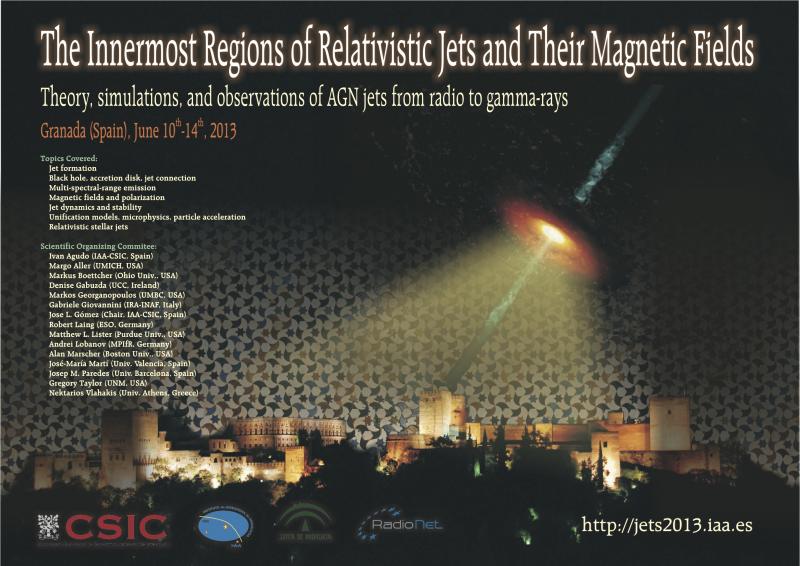The Innermost Regions of Relativistic Jets and Their Magnetic Fields. Granada (Spain). June 10th-14th, 2013.
Joshi, Manasvita
Constraining the location of gamma-ray emission in Blazar jets.
Author list: Manasvita Joshi, Alan Marscher, & Markus Boettcher
The location of gamma-ray emission in blazar jets has remained elusive to our understanding of jet emission despite the extensive multiwavelength campaigns and rigorous theoretical efforts to understand the multiwavelength spectra. The synergy between multiwavelength campaigns and VLBA studies has resulted in correlation between majority of gamma-ray events and disturbances propagating down the parsec-scale jet. This implies that the gamma-ray emission might originate beyond the broad line region (BLR), perhaps on scales comparable to the size of the dusty torus. On the other hand, external Compton models in which gamma-ray emission is limited to sites inside the BLR have been used to explain the high-energy emission of many blazars. Thus, comprehending the time-dependent impact of all the three external components of seed photon field, namely the accretion disk, the BLR, and the dusty torus, on the evolution of the spectral energy distribution (SED) can be used as an important tool for connecting the origin of gamma-ray emission of a flare to its multiwavelength properties. Here, we use a multi-zone time-dependent leptonic jet model, with radiation feedback, to address this aspect of blazar jet emission. We let the system evolve to beyond the BLR and within the dusty torus. We explore the effects of varying the contribution of the disk, the BLR, and the dusty torus on the resultant seed photon field and their manifestation on the simulated SED of a typical blazar to gain insight on the location of the gamma-ray emission region.
This is supported by NASA through Fermi grant NNX12AO59G.




